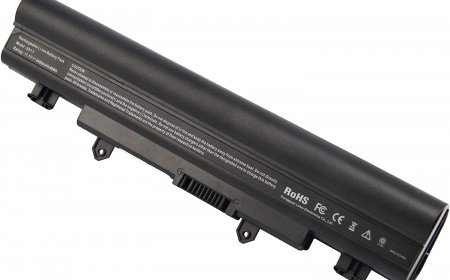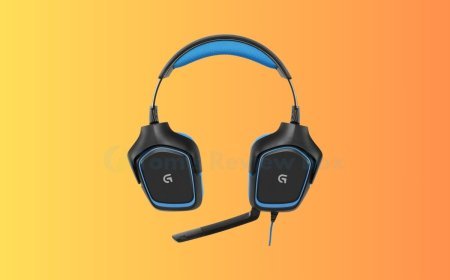The Ultimate Clash: iPhone vs Google Pixel - Unleashing the Battle of Titans!
Explore the ultimate showdown between iPhone and Google Pixel. Discover their cutting-edge features, camera capabilities, performance, and more. Get the inside scoop on which smartphone reigns supreme in this epic battle of technology giants.
The ongoing battle between Apple's iPhone and Google's Pixel devices has captivated smartphone enthusiasts around the world. With each new release, these two tech giants compete to offer the best features, performance, and user experience. The choice between an iPhone and a Google Pixel is a matter of personal preference, as both brands have their unique strengths and characteristics.
In this comprehensive article, we delve into the comparison of iPhone and Google Pixel, examining various aspects such as design and aesthetics, camera capabilities, performance, operating systems, display quality, battery life, storage options, pricing, ecosystem integration, privacy, and security. By exploring these areas, we aim to provide you with a detailed analysis that can help you make an informed decision when choosing between an iPhone and a Google Pixel.
Whether you're drawn to the sleek design and ecosystem integration of the iPhone or intrigued by the clean interface and computational photography prowess of the Google Pixel, this article will serve as a guide to understanding the key differences and similarities between these two flagship smartphone offerings. So, let's dive into the captivating world of iPhone versus Google Pixel and uncover which device reigns supreme in the ever-evolving landscape of mobile technology.
Things you need to know: iPhone vs Google Pixel

Build Quality: Examining the Materials and Construction
- iPhone: Apple has a reputation for using premium materials in their devices. iPhones often feature a combination of aluminum or stainless steel frames, along with durable glass panels for the front and back. The build quality is generally robust, providing a solid and premium feel.
- Google Pixel: Google Pixel devices typically have an aluminum or glass back, offering a sleek and modern appearance. While they may not have the same level of luxury as iPhones, the build quality is still commendable, with a sturdy construction that ensures durability.
Form Factor: Contrasting the Physical Dimensions and Ergonomics
- iPhone: Apple offers a range of form factors to cater to different preferences. From compact options like the iPhone SE to larger models like the iPhone 12 Pro Max, iPhones are designed to balance screen size with comfortable handling. The devices often feature rounded edges and slim profiles, contributing to a sleek and ergonomic design.
- Google Pixel: Google Pixel devices also come in various sizes, accommodating different user needs. They typically have a minimalist design, with squared-off edges and slim bezels. The form factors are optimized for one-handed use, making them comfortable to hold and operate.
Design Philosophy: Uncovering Apple's and Google's Design Approaches
- iPhone: Apple places a strong emphasis on minimalist design and simplicity. iPhones are known for their clean lines, seamless integration of hardware and software, and attention to detail. The design philosophy aims to create an intuitive and user-friendly experience, with a focus on elegance and refinement.
- Google Pixel: Google follows a similar approach with its design philosophy, emphasizing simplicity and ease of use. Pixel devices showcase a clean and uncluttered interface, with thoughtful touches like the placement of buttons and intuitive navigation. The design is centered around delivering a streamlined and user-centric experience.
Color Options: Exploring the Range of Available Shades
- iPhone: Apple offers a diverse range of color options for its iPhones. These options can vary depending on the specific model, but they often include classic choices such as black, silver, and gold, as well as more vibrant options like blue, green, and red. The color selection provides users with the opportunity to express their personal style.
- Google Pixel: Google Pixel devices typically offer a more limited color palette compared to iPhones. The available colors may vary between generations, but they usually include options like black, white, and a distinctive color variant, such as "Clearly White" or "Just Black." While the choices may be fewer, they still provide a clean and sophisticated look.
Display Design: Evaluating Bezels, Notches, and Screen-to-Body Ratios
- iPhone: Apple has been progressively reducing bezels and introducing innovative display designs. Recent iPhones feature edge-to-edge OLED or LCD screens with minimal bezels. The display cutout, known as the notch, houses the front-facing camera and sensors. This design maximizes screen real estate and offers an immersive viewing experience.
- Google Pixel: Google Pixel devices also adopt a bezel-reducing approach, striving for a high screen-to-body ratio. However, unlike iPhones, some Pixel models feature a more traditional forehead and chin design with symmetrical bezels. Newer Pixel devices may have a punch-hole cutout for the front camera, providing a more unobstructed display area.
Button Placement: Assessing the Layout and Accessibility of Physical Buttons
iPhone: Apple follows a consistent button layout across its iPhone lineup. The power button is usually located on the right side, while the volume buttons are on the left side. Additionally, there may be a mute switch or a dedicated Siri button, depending on the model. The placement is designed for easy access and intuitive operation, allowing users to control the device effortlessly.
Google Pixel: Google Pixel devices typically have a similar button placement as iPhones. The power button is usually positioned on the right side, while the volume buttons are located on the left side. However, unlike iPhones, Google Pixel devices do not have a dedicated mute switch or Siri button. The button placement is designed to be easily reachable and facilitate convenient usage.
Brand Identity: Analyzing the Iconic Design Elements of iPhone and Google Pixel
iPhone: Apple's iPhones have become synonymous with sleek and iconic design elements. From the minimalist aesthetic to the recognizable Apple logo, iPhones have established a strong brand identity. The rounded corners, symmetrical layout, and attention to detail contribute to the distinct look and feel associated with Apple's flagship devices.
Google Pixel: While Google Pixel devices may not have the same level of brand recognition as iPhones, they have their own unique design elements. The clean and understated design, combined with the placement of the Google "G" logo on the back, contributes to the brand identity of Google Pixel devices. The focus is on simplicity and seamless integration of hardware and software.
Aesthetic Appeal: Comparing the Overall Visual Attractiveness of the Devices
iPhone: iPhones are widely regarded for their visually appealing design. The combination of premium materials, sleek form factors, and attention to detail create an overall aesthetic that is considered elegant and sophisticated. Apple's commitment to aesthetics has made iPhones a popular choice among users who value style and a premium look.
Google Pixel: Google Pixel devices also offer a visually pleasing design. While they may have a more understated appearance compared to iPhones, their clean lines and minimalist approach result in a sleek and modern aesthetic. Google's focus on simplicity and functionality adds to the overall appeal of Pixel devices.
Durability: Gauging the Resistance to Drops, Water, and Dust
iPhone: iPhones are known for their durability. Apple utilizes durable materials and employs rigorous testing to ensure the devices can withstand everyday wear and tear. Many iPhones have water and dust resistance ratings, offering protection against accidental spills or exposure to harsh environments. Additionally, Apple often incorporates robust glass and protective coatings to enhance durability and minimize the risk of damage from drops.
Google Pixel: Google Pixel devices also prioritize durability. While they may not always have the same level of water and dust resistance as iPhones, they still offer a degree of protection. The devices are designed to withstand common usage scenarios and are built with durability in mind. However, it's important to handle any smartphone with care to maintain its longevity.
Unique Features: Highlighting Special Design Elements and Innovations
iPhone: iPhones have introduced various unique features over the years. These include technologies like Face ID for facial recognition, the iconic home button (in older models), and the implementation of advanced haptic feedback with the Taptic Engine. Additionally, iPhones often incorporate innovative camera systems, such as dual or triple lens setups, to enhance photography capabilities.
Google Pixel: Google Pixel devices also bring their own set of unique features. Notable examples include the integration of Google Assistant for seamless voice control, the Titan M security chip for enhanced device security, and the emphasis on computational photography through features like Night Sight and Astrophotography mode. These features aim to provide a distinctive user experience and differentiate Pixel devices in the market.
Design and Aesthetics: Comparing the Visual Appeal
When it comes to design and aesthetics, the iPhone and Google Pixel offer distinctive styles. The iPhone boasts Apple's signature sleek and minimalist design, with a premium build quality and attention to detail. On the other hand, Google Pixel devices often feature a more utilitarian design with a focus on functionality rather than flashy aesthetics. Both devices come in various colors and finishes, allowing users to choose according to their personal preferences.
Camera Battle: iPhone vs Google Pixel - Which Reigns Supreme?
The camera battle between the iPhone and Google Pixel is highly anticipated, as both devices are renowned for their exceptional camera capabilities. The iPhone typically excels in delivering natural and well-balanced images, with accurate color reproduction and impressive low-light performance. On the other hand, Google Pixel devices are known for their computational photography prowess, utilizing advanced algorithms to capture stunning details and vibrant colors. Ultimately, the choice between the two largely depends on individual preferences regarding image processing and desired photography style.
Performance Showdown: Evaluating Speed and Power
Performance is a crucial factor when comparing smartphones. The iPhone and Google Pixel both offer powerful processors and ample RAM to ensure smooth multitasking and speedy app performance. The iPhone typically utilizes Apple's custom-designed processors, known for their exceptional performance and efficiency. Meanwhile, Google Pixel devices often rely on Qualcomm Snapdragon processors, which provide solid performance and optimized power consumption. Benchmark tests and real-world usage should be considered to gauge the overall performance of each device.
Operating Systems: iOS vs Android - Which Offers a Better User Experience?
The choice between iOS and Android is a fundamental decision when considering an iPhone or Google Pixel. iOS, exclusive to the iPhone, offers a streamlined and intuitive user interface, with a focus on simplicity and security. It provides a cohesive ecosystem and benefits from timely software updates. On the other hand, Google Pixel devices run on Android, which offers more customization options and a wide range of apps and services. Android's open nature allows for greater flexibility, but it may also result in more fragmentation across devices in terms of software updates.
Display Quality: Analyzing Screen Technology and Resolutions
The display quality of a smartphone greatly impacts the overall user experience. The iPhone typically features high-quality OLED or Liquid Retina displays, known for their vibrant colors, deep blacks, and excellent contrast ratios. The Google Pixel devices also offer OLED displays, providing vivid colors and impressive clarity. Both devices come with varying resolutions, pixel densities, and screen sizes, catering to different user preferences. Factors like color accuracy, brightness, and HDR support should be considered when comparing their display performances.
Battery Life: Which Device Lasts Longer on a Single Charge?
Battery life is a critical consideration for many users. The iPhone and Google Pixel devices differ in terms of battery capacity and software optimization. Apple strives to optimize battery efficiency through its hardware-software integration, often resulting in impressive battery life on iPhones. Google Pixel devices, while offering competitive battery performance, may vary depending on factors like display size, processor efficiency, and individual usage patterns. It is important to assess real-world usage scenarios and consider features like fast charging and wireless charging capabilities.
Storage and Expandability: Examining Memory Options
The storage and expandability options of the iPhone and Google Pixel play a significant role in user convenience. iPhones typically offer fixed storage capacities, ranging from 64GB to higher tiers like 128GB, 256GB, or even 512GB. However, they lack expandable storage options, meaning users must choose their storage capacity wisely from the start. On the other hand, Google Pixel devices often offer more flexible storage options, with lower base storage capacities but the ability to expand via microSD cards. This allows users to add additional storage based on their specific needs and budget.
Pricing and Value: Determining the Best Bang for Your Buck
Price is a significant factor when comparing the iPhone and Google Pixel. iPhones tend to be positioned in the higher price range, reflecting Apple's premium brand image and the perceived value of its hardware and software integration. On the other hand, Google Pixel devices often offer a more affordable price point, making them an attractive option for budget-conscious consumers. It's essential to consider the overall value provided by each device, including factors such as build quality, camera performance, software features, and long-term software support.
Ecosystem and Integration: Comparing Apple's and Google's Seamless Connectivity
The ecosystem and integration between the iPhone and other Apple devices versus Google Pixel and the broader Android ecosystem can be a deciding factor for some users. The iPhone benefits from tight integration with other Apple products, such as Macs, iPads, Apple Watches, and the iCloud ecosystem.
This allows for seamless connectivity, easy data sharing, and synchronized experiences across multiple devices. On the other hand, Google Pixel devices integrate well with Google services, including Google Drive, Google Photos, and Google Assistant. Users who heavily rely on Google's suite of services may find the Pixel ecosystem more appealing.
Privacy and Security: Assessing Data Protection Features
Privacy and security are growing concerns in the digital age. Apple has positioned itself as a champion of user privacy, implementing robust security measures such as secure enclaves and stringent app review processes. The iPhone also offers features like Face ID or Touch ID for secure biometric authentication.
Google Pixel devices, while benefiting from regular security updates, often face scrutiny due to the more open nature of the Android platform. However, Google has been making efforts to enhance user privacy, offering features like the Titan M security chip and advanced privacy controls. It's important to consider individual preferences and priorities regarding data protection when comparing the two devices.
Final Thought
The battle between iPhone and Google Pixel has been an ongoing debate among smartphone enthusiasts, each having its own strengths and weaknesses. Ultimately, the choice between the two comes down to personal preferences and individual needs.
The iPhone has long been hailed for its seamless integration of hardware and software, delivering a polished user experience. Apple's ecosystem offers a wide range of apps, accessories, and services that work harmoniously together, creating a cohesive and user-friendly environment. Additionally, the iPhone often excels in areas like camera quality, overall performance, and long-term software support.
On the other hand, Google Pixel devices are known for their exceptional camera capabilities, powered by advanced computational photography. With their clean and straightforward approach to software, Pixels provide a pure Android experience, often receiving timely updates and taking advantage of the latest features offered by the Android platform. Google's integration of AI and machine learning technologies also brings unique functionalities to the table.
When deciding between the two, it's essential to consider factors such as design preferences, ecosystem compatibility, camera requirements, software preferences, and overall user experience. Both iPhone and Google Pixel have their loyal fan bases who appreciate the distinct qualities they offer.
In the end, it's a matter of personal preference and what aspects of a smartphone matter most to you. Whether you prioritize a seamless ecosystem and premium build quality or cutting-edge camera technology and a clean Android experience, both the iPhone and Google Pixel can deliver a satisfying smartphone experience. It's worth exploring the features and strengths of each device to make an informed decision that aligns with your specific needs and desires.
What's Your Reaction?







































![MacBook Pro M5: All the features and specs you need to know [LEAKS REVEALED]](https://tomsreviewbox.com/uploads/images/202502/image_430x256_67bd6d7cd7562.jpg)



























